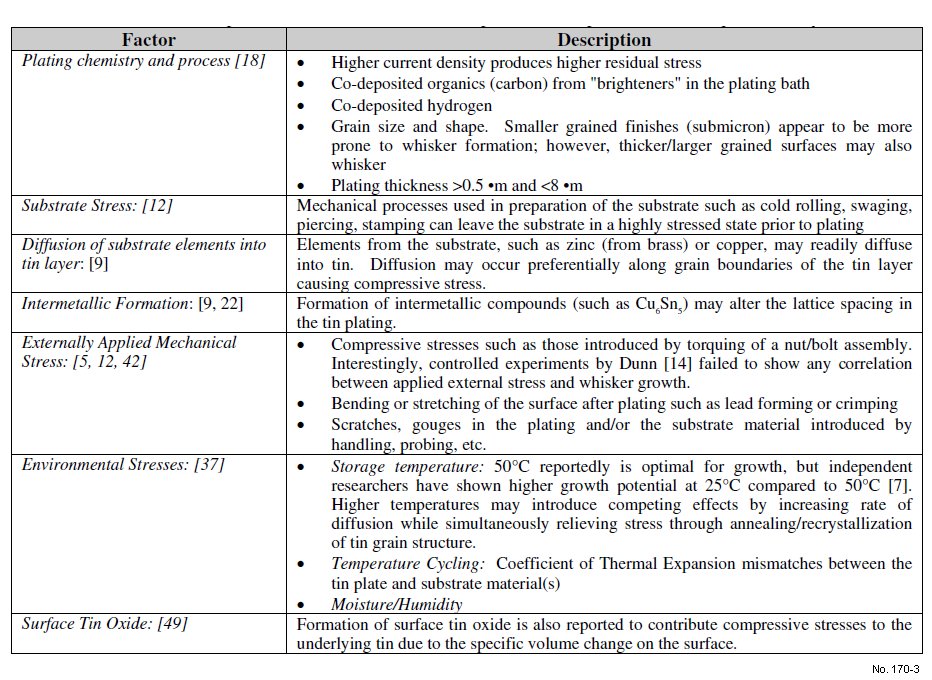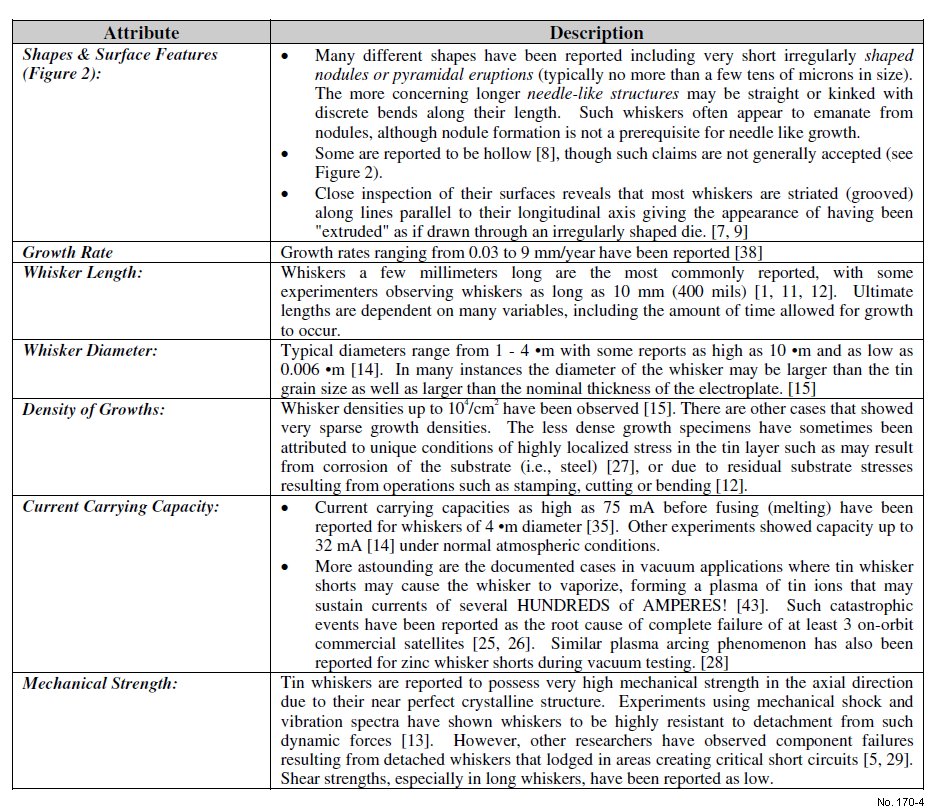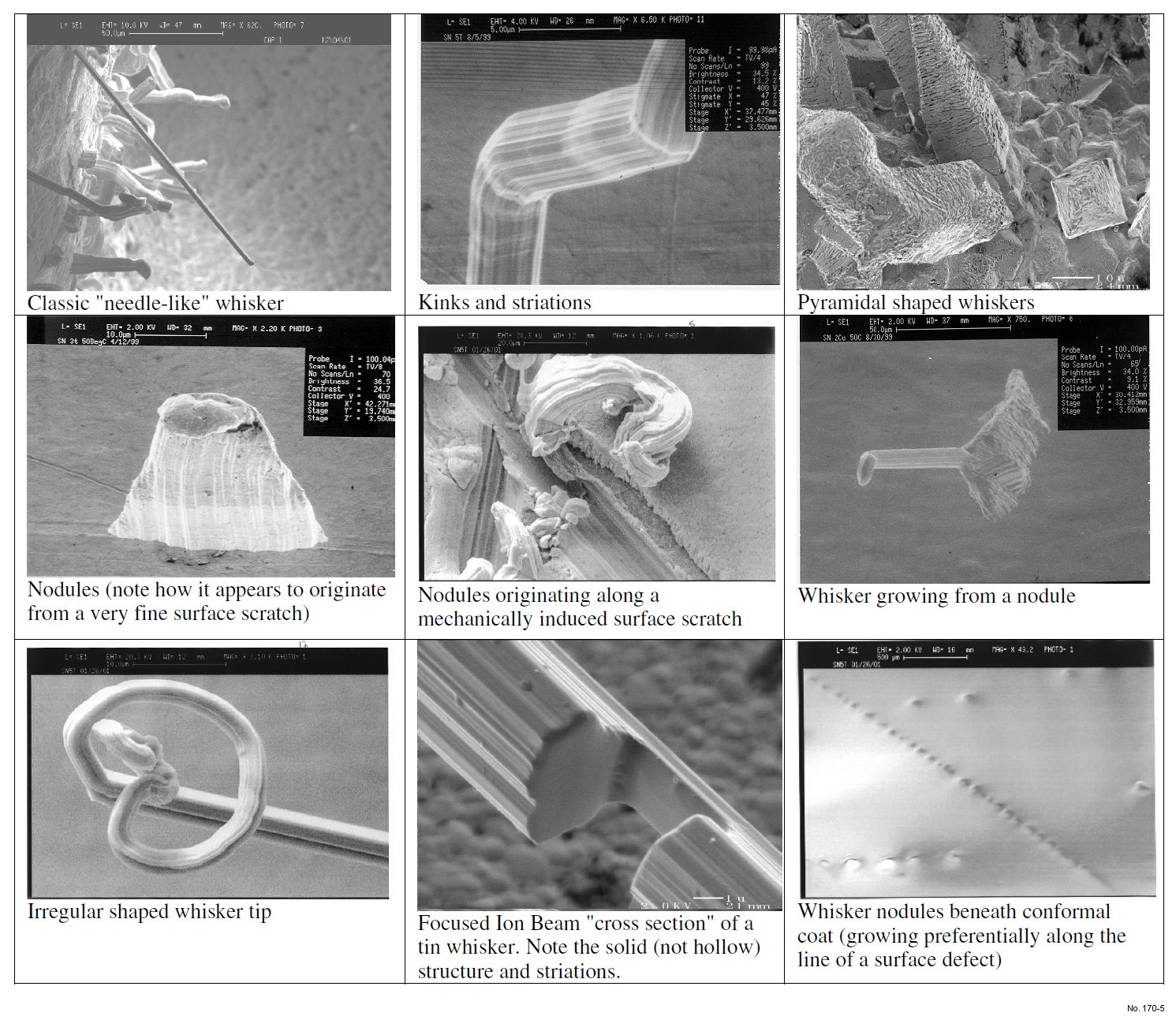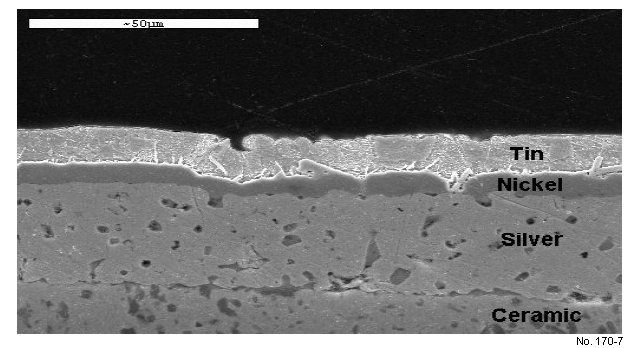
Alphabetical Index
Browse by Elements
Keyword Search
Dry Etchants
Dry and Wet Etchants
Wet Etchants
Bulk Etchants
Layer Etchants
Nano Etchants
Single Crystal Etchants
Thin Film Etchants
Thin Foil Etchants
Wafer Etchants
Al Etchants
Cd Etchants
Ga Etchants
Ge Etchants
In Etchants
New Etchants
Other Etchants
Si Etchants
Zn Etchants
Help
Home
Failure Modes IKnduced by Tin Whiskers
Material Name: Whiskers
Record No.: 170
Primary Chemical Element in Material: Sn
Sample Type: Bulk
Uses: Etching
Etchant Name: None
Etching Method: Dry etching
Etchant (Electrolyte) Composition: No data
Procedure (Condition): No data
Note: No data
Reference: Jocelyn P. Siplon, et al., Tin Whiskers On Discrete Components: The Problem, ISTFA 2002, Proceedings of the 28th International Symposium for Testing and Failure Analysis, 3-7 November 2002, Phoenix Civic Center, Phoenix, Arizona, pp. 421-434.

Figure 1: A few examples of pure tin-plated components that have exhibited tin whisker growth, courtesy of
NASA-Goddard.
Table 1: Equipment failure modes induced by tin whiskers.

Table 2: Reported field problems induced by tin whiskers.

Table 3: Factors reported to contribute to the development of compressive stress in plated tin layers.

Table 4: Common tin whisker attributes.


Figure 2: Whisker Shapes (courtesy of NASA Goddard and The Aerospace Corporation).

Figure 3: Tin whiskers/nodules on commercial-grade ceramic capacitor after 554 thermal cycles.

Figure 4: Cross-section of commercial-grade ceramic capacitor with pure-tin termination finish.

Figure 5: Whiskers on MIL-grade pure-tin plated ceramic capacitor after 100 thermal cycles.